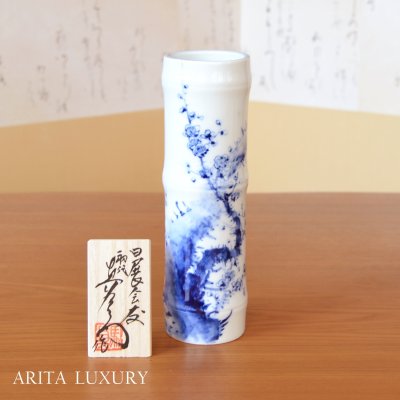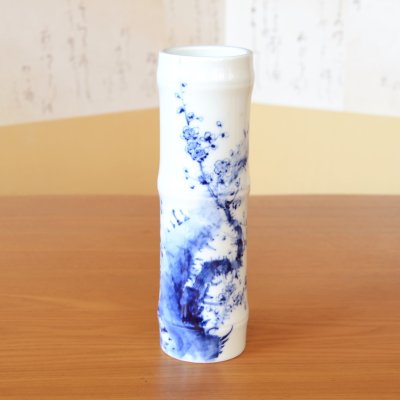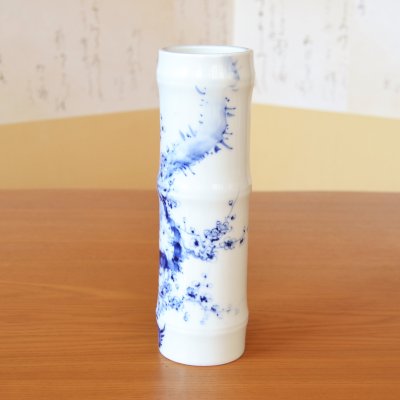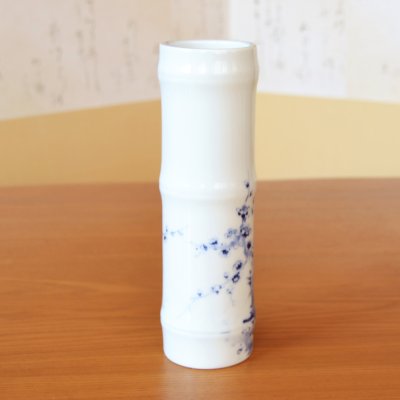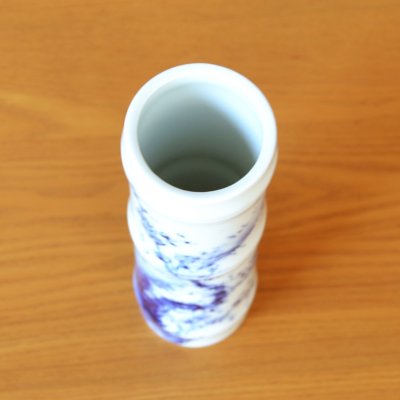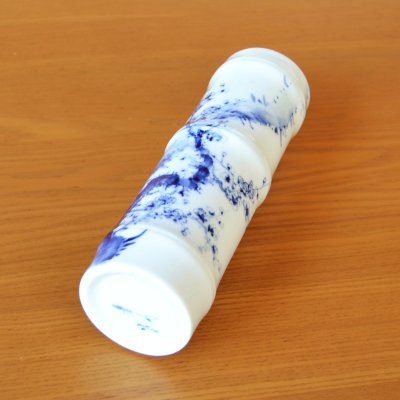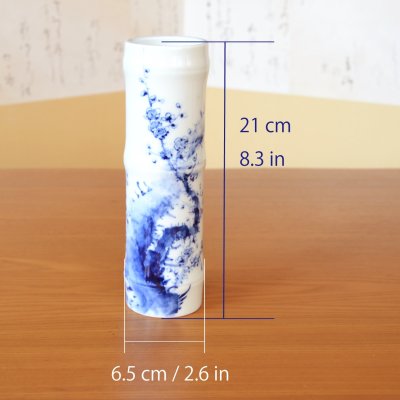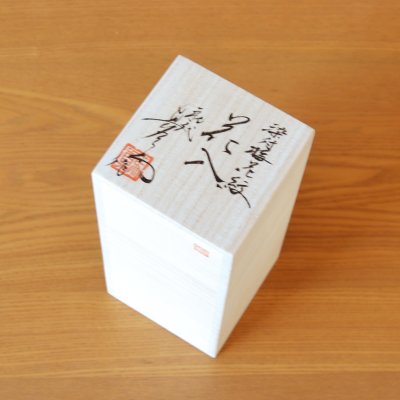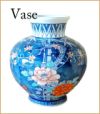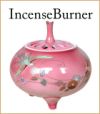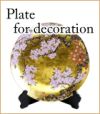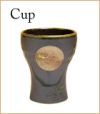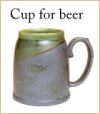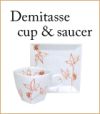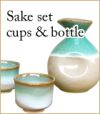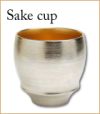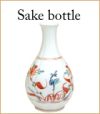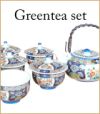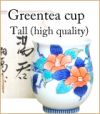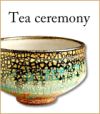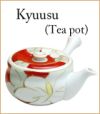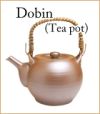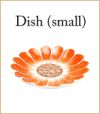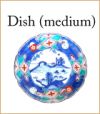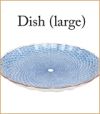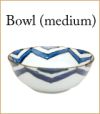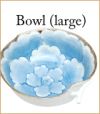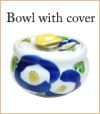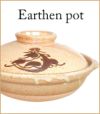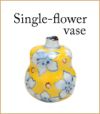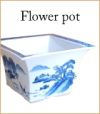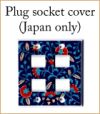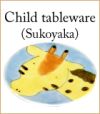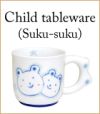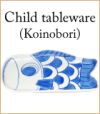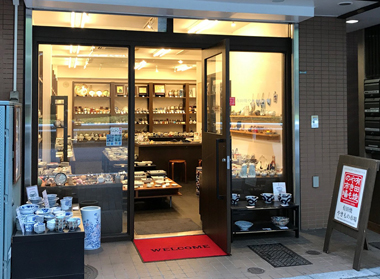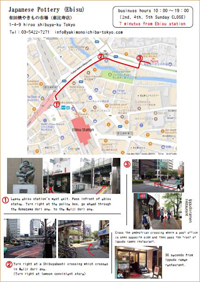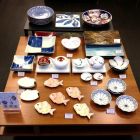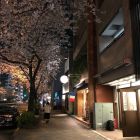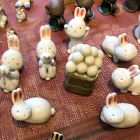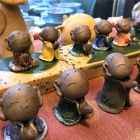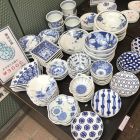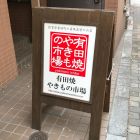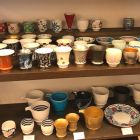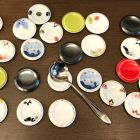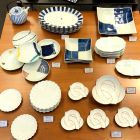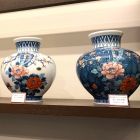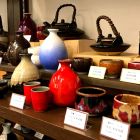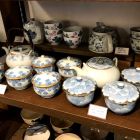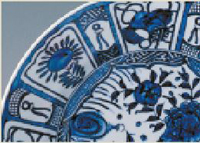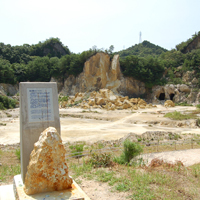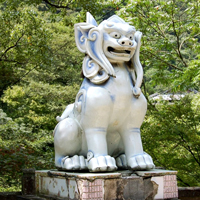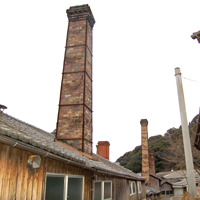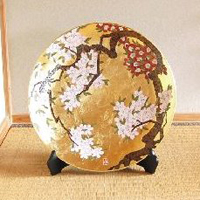Bamboo-Shaped Vase Sometsuke Ume Plum Blossom Painting | The first-generation head of the Shinemon Kiln [146184]
Bamboo-Shaped Vase Sometsuke Ume Plum Blossom Painting | The first-generation head of the Shinemon Kiln
[146184]
Price: 110,000JPY
Weight: 2000g
Low stock
[size]
Width: 6.5cm / Height: 21cm
Width: 2.6in / Height: 8.3in
-----------------------
This is a work by the predecessor and first-generation master of Shinemon Kiln, Shinichiro Baba (posthumously Shinemon), one of the representative kilns of Arita ware. It is a vase inspired by the form of a bamboo tube, boldly decorated with plum blossoms in sometsuke (blue-and-white underglaze). Crafted with the refined techniques of Arita ware, the vessel captures the natural form of “bamboo,” symbolizing quintessential Japanese aesthetics such as tranquility, dignity, and wabi-sabi.
Today, Shinemon Kiln is widely recognized as a leader in the yohen technique, which requires masterful control of glazes. However, this piece is not yohen but sometsuke. This is because it was created by the founding master himself during his career. The piece reveals how he expressed his artistry through sometsuke, the fundamental painting method of Arita ware. Since Shinemon Kiln rarely produces sometsuke works today, this vase is now a highly rare and valuable example.
The form itself is unique?a tall, slender vessel modeled after a bamboo tube, ideally suited for use as an ichirin-zashi (single-flower vase). With Arita craftsmanship capturing the elegance of bamboo, this refined piece embodies both serenity and vitality, lending a graceful presence to a Japanese-style space. When a single flower is placed within, vessel and nature blend into one, offering the beauty of generous negative space.
The decorative motif here is the plum blossom. Blooming even in the harsh cold, the plum symbolizes “hope” and “new beginnings.” Traditionally cherished as an auspicious design, it also conveys meanings of “longevity,” “prosperity,” and “nobility.” Its fragile yet dignified presence resonates deeply with the Japanese sense of beauty, embodying wabi-sabi in this work.
From the perspective of technique, the decoration is executed in sometsuke. This involves painting onto the bisque-fired body before glazing. The flowing brushwork and distinctive touch unique to this method vividly express a delicate painterly world. Because the absorbent surface of the bisque does not allow corrections, every brushstroke must be made decisively in a single attempt. Patience, concentration, and compositional skill?all are combined to bring this piece to completion.
[Potter Profile]
Shinichiro Baba (deceased)
The first-generation head of the Shinemon Kiln
Member of Nitten / Full Member of the Japan Contemporary Arts and Crafts Association / Member of the Saga Prefecture Ceramic Association / Member of the Arita Ceramic Association
[Shinichiro Baba's career is as follows ]
Born in 1924 in Arita, Saga Prefecture
1972: Founded the Shinemon Kiln in Arita.
1979: Selected for the Prefecture Exhibition with "Hexagonal Celadon Bowl."
1981: Selected for the Nitten exhibition with "Oil Spot Tenmoku Large Bowl," subsequently selected 21 times.
1989: Appointed as an art exhibition judge.
2000: Exhibited "Saiun-99" and "Sai-99" at the British Museum in London (Saga Prefecture Ceramic Exhibition).
2004: Exhibited "Saikei" and "Saimon" at the Arita Pottery Exhibition in Germany.
[Main Awards]
1983: Won the First Place Bijutsu Kyokai Prize at the Bijutsu Kyokai Exhibition for "Cinnabar Flower Vase."
1986: Received the Grand Prize and the Contemporary Craft President's Prize at the Contemporary Crafts Kyushu Exhibition.
1996: Awarded the Contemporary Craft Prize at the Contemporary Craft Exhibition for "Akebono no Nagisa."
2000: Received the Full Member Prize at the Contemporary Craft Exhibition for "Rensaku・Sai."
Width: 6.5cm / Height: 21cm
Width: 2.6in / Height: 8.3in
-----------------------
This is a work by the predecessor and first-generation master of Shinemon Kiln, Shinichiro Baba (posthumously Shinemon), one of the representative kilns of Arita ware. It is a vase inspired by the form of a bamboo tube, boldly decorated with plum blossoms in sometsuke (blue-and-white underglaze). Crafted with the refined techniques of Arita ware, the vessel captures the natural form of “bamboo,” symbolizing quintessential Japanese aesthetics such as tranquility, dignity, and wabi-sabi.
Today, Shinemon Kiln is widely recognized as a leader in the yohen technique, which requires masterful control of glazes. However, this piece is not yohen but sometsuke. This is because it was created by the founding master himself during his career. The piece reveals how he expressed his artistry through sometsuke, the fundamental painting method of Arita ware. Since Shinemon Kiln rarely produces sometsuke works today, this vase is now a highly rare and valuable example.
The form itself is unique?a tall, slender vessel modeled after a bamboo tube, ideally suited for use as an ichirin-zashi (single-flower vase). With Arita craftsmanship capturing the elegance of bamboo, this refined piece embodies both serenity and vitality, lending a graceful presence to a Japanese-style space. When a single flower is placed within, vessel and nature blend into one, offering the beauty of generous negative space.
The decorative motif here is the plum blossom. Blooming even in the harsh cold, the plum symbolizes “hope” and “new beginnings.” Traditionally cherished as an auspicious design, it also conveys meanings of “longevity,” “prosperity,” and “nobility.” Its fragile yet dignified presence resonates deeply with the Japanese sense of beauty, embodying wabi-sabi in this work.
From the perspective of technique, the decoration is executed in sometsuke. This involves painting onto the bisque-fired body before glazing. The flowing brushwork and distinctive touch unique to this method vividly express a delicate painterly world. Because the absorbent surface of the bisque does not allow corrections, every brushstroke must be made decisively in a single attempt. Patience, concentration, and compositional skill?all are combined to bring this piece to completion.
[Potter Profile]
Shinichiro Baba (deceased)
The first-generation head of the Shinemon Kiln
Member of Nitten / Full Member of the Japan Contemporary Arts and Crafts Association / Member of the Saga Prefecture Ceramic Association / Member of the Arita Ceramic Association
[Shinichiro Baba's career is as follows ]
Born in 1924 in Arita, Saga Prefecture
1972: Founded the Shinemon Kiln in Arita.
1979: Selected for the Prefecture Exhibition with "Hexagonal Celadon Bowl."
1981: Selected for the Nitten exhibition with "Oil Spot Tenmoku Large Bowl," subsequently selected 21 times.
1989: Appointed as an art exhibition judge.
2000: Exhibited "Saiun-99" and "Sai-99" at the British Museum in London (Saga Prefecture Ceramic Exhibition).
2004: Exhibited "Saikei" and "Saimon" at the Arita Pottery Exhibition in Germany.
[Main Awards]
1983: Won the First Place Bijutsu Kyokai Prize at the Bijutsu Kyokai Exhibition for "Cinnabar Flower Vase."
1986: Received the Grand Prize and the Contemporary Craft President's Prize at the Contemporary Crafts Kyushu Exhibition.
1996: Awarded the Contemporary Craft Prize at the Contemporary Craft Exhibition for "Akebono no Nagisa."
2000: Received the Full Member Prize at the Contemporary Craft Exhibition for "Rensaku・Sai."
 |
Import duties, taxes, and charges are not included in the item price or shipping cost. When a duty occurs, you are responsible for paying Customs Duties. |
 |
 |
Source: www.exchange-rates.org
